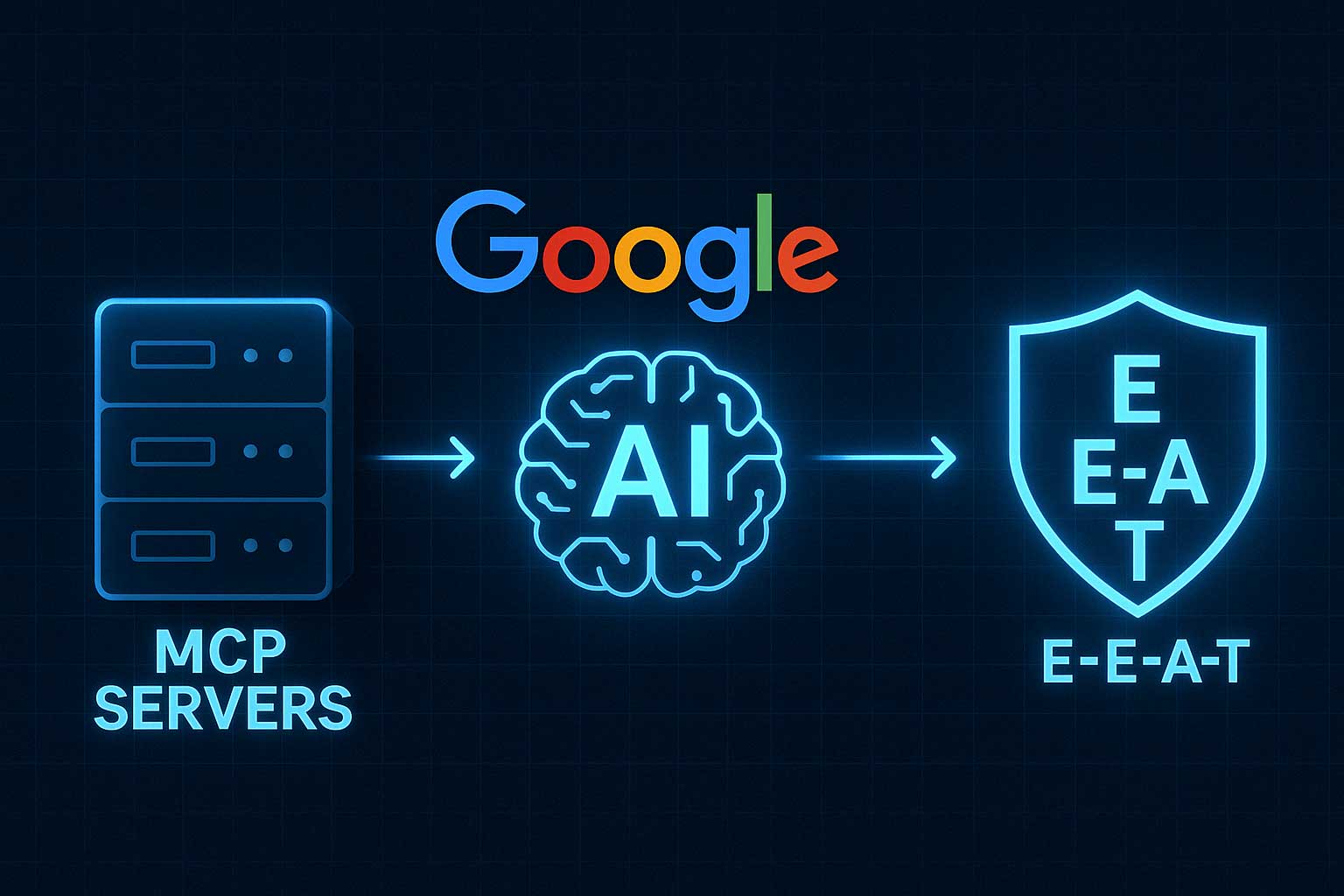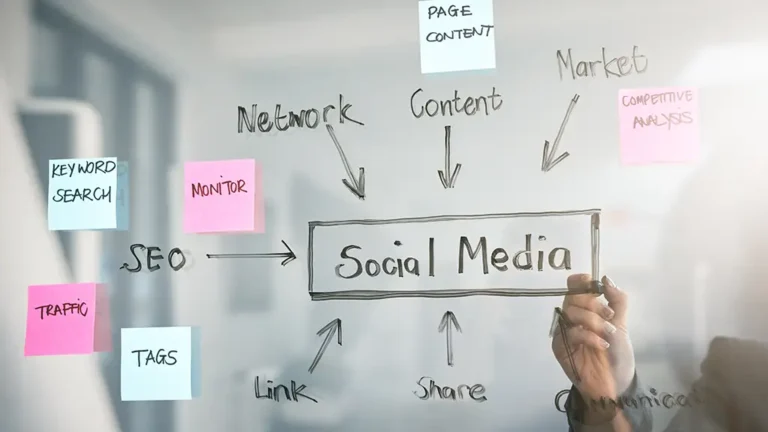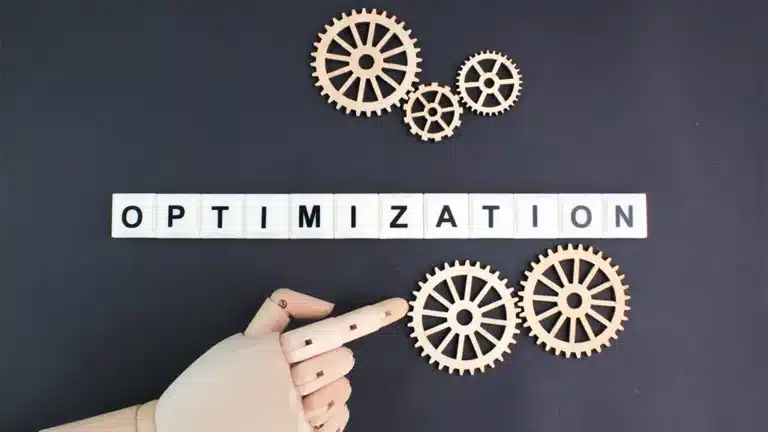The Impact of AI on Google Rankings in 2025: Strategies for High-Quality Content Creation
Introduction
In 2025, artificial intelligence (AI) has emerged as an essential component of search engine optimization (SEO), thus changing the rules of how content gets placed in Google results. In this paper, we will analyze the effect of AI on Google rankings, paying attention to the quality of the content generated by AI, the challenges of DIY platforms, recent improvements, and challenges. Also, it describes the detailed multi-step AI content creation process involving specialized AI agents and discusses the role of Model Context Protocol (MCP) servers. Also, it contains a case from Joe Riviello, the CEO of Zen Agency™, explaining the importance of Expertise, Experience, Authoritativeness, and Trustworthiness (EEAT). This is a detailed analysis which serves as cornerstone content for Zen Agency’s blog and links to their AI Agent service page.
How AI affects Google rankings
Google’s ranking system has changed due to the use of AI, and it now emphasizes on understanding the user, the quality of the content and the complexity of the algorithm. Two key developments show this shift: AI Overviews and updates that stress on EEAT which stands for Experience, Expertise, Authoritativeness, Trustworthiness.
AI Overviews and Visibility
Google’s use of AI Overviews which are summaries to search results generated by AI has changed the rules of SEO. These overviews extract information from the top pages to give the user the best possible answers. As a result, getting a top spot (for instance, in the first 3-5 results) is now more important than ever. Why? AI Overviews typically give preference to the content that is:
- Close to the topic of the query.
- Structured, with clear headings, lists, and a brief description.
- Backed by credible sources or written by an expert.
For example, when searching for “best SEO strategies” an AI Overview will present the tips from the top-ranked articles. If your content is not in the top spots, its visibility drops significantly because most people will not go past the overview. This raises competition for the top spots and, therefore, the quality of the content should be high.
Core Updates and EEAT
Google’s core algorithm updates such as the one in March 2025 (based on trends) still improve how AI evaluates content. These updates give a lot of weight to EEAT which stands for:
- Experience: Does the content present the author’s actual practical experience?
- Expertise: Is the author or the source credible to speak about the subject matter?
- Authoritativeness: Does the site or the author have credibility?
- Trustworthiness: Is the content free of errors, transparent, and dependable?
AI-powered algorithms such as Google’s RankBrain and BERT examine content semantically, moving beyond keywords to the meaning and purpose of the content. For instance, a blog post on “AI in SEO” by a recognized expert in the field with supporting data will likely rank higher than a generic article full of keywords. This change requires businesses to develop informative, trustworthy content that can provide value to the target audience.
Practical Implications
- Focus on the user intent: Ensure that the questions are answered fully and to the point.
- Enhance EEAT: Add author bio, references, and facts to the article.
- Target top positions: Follow the SEO best practices (e.g., internal linking, fast loading time) to improve the rankings.
Since AI is embedded into Google systems, quality and relevance are the key to the content strategies, and thus, content strategies need to be aligned to these principles.
The level of AI-Generated Content Quality
The validity of the content generated by AI has been a subject of discussion, but Google has made it clear that the quality of the content is more important than the tool used to create it. Whether written by human or AI, content must be good enough to rank well.
Good vs. Bad AI Content
High Quality AI Content: Well researched, original, and edited content that gives value. For example, an article written by an AI and edited by a human to enhance clarity, coherence, and interest can be very good. Gotch SEO gives examples of how such content can be found in the top 10 because it meets EEAT and user needs.
AI generates low-quality content which includes unoriginal and repetitive or inaccurate information that requires no human supervision. Gotch SEO observed how unedited AI content triggered Google to delete it from search results because of poor content quality or duplication.
Google’s Quality Raters
Google uses human evaluators to judge content through EEAT guidelines which they apply during their assessment. AI algorithms receive training from the feedback generated by these human raters who do not affect actual ranking positions. They mark content that:
- Lacks originality (e.g., parroting other sources).
- Contains errors or unverified claims.
- Fails to serve the user’s intent.
The AI content has a chance to succeed when refined by humans or trained with advanced prompts but poorly generated content gets penalized.
Examples and Lessons
- Success: Through its use of AI to create draft articles followed by expert refinement which adds data and insights the tech blog achieves sustained top rankings.
- Failure: A site mass-produces AI articles with no editing, leading to de-indexing and lost traffic.
Key Takeaways
- Human Oversight: AI is a tool, not a replacement. Editing ensures quality and uniqueness.
- Focus on Value: Content must inform, solve problems, or entertain to rank well.
- Avoid Shortcuts: Mass-produced, unpolished AI content risks penalties.
AI functions as a strong strategic ally when implemented with purposeful intent.
DIY Platforms and Generic Content
Users can create content swiftly through DIY platforms such as Jasper AI and Copy.ai but need skilled prompting to avoid receiving generic results. It is essential to comprehend both the advantages and disadvantages of these platforms in order to maximize their usage.
How DIY Platforms Work
The tools generate text from user prompts through their application of large language models (LLMs). They excel at:
- Speed: Drafting blog posts or ad copy in minutes.
- Scalability: Generating bulk content for campaigns.
- Templates: Providing ready-made structures for frequent document requirements including product descriptions.
The content generated without customization tends to display a mechanical quality which prevents it from developing both depth and personality. The input “write a blog post about SEO” results in standard information which duplicates numerous similar articles found across the internet.
The Generic Content Trap
Piktochart’s research highlights a stark contrast:
- Generic Content: Bland, keyword-heavy text that fails to engage readers or rank well. Example: “SEO is important for websites.”
- Engaging Content: Specific, story-driven, and actionable. Example: “How we boosted traffic 50% with one SEO tweak.”
Google’s algorithms detect this difference, favoring content that stands out. AI-generated content that lacks specificity faces possible elimination from search results.
Improving DIY Outputs
To elevate content from these platforms:
- Craft Detailed Prompts: Instead of “write about SEO,” try “explain how AI impacts SEO rankings in 2025, with examples and stats.”
- Add Unique Insights: Inject personal experiences or data to differentiate the content.
- Edit Thoroughly: Refine tone, structure, and accuracy to align with your brand.
Practical Tips
- Jasper AI provides outlines for content generation while original research expands the content into comprehensive articles.
- Use Copy.ai as a starting point for brainstorming before you need to rewrite critical sections to establish authentic content.
- Test outputs against competitors to ensure uniqueness.
The power of DIY platforms as starting tools depends on how well users personalize and refine content to prevent generic output.
Recent Innovations and Challenges
The quick development of AI technology provides modern content creation tools while exposing new obstacles for SEO professionals to overcome. We will examine recent advancements in addition to the ways through which to manage their obstacles.
Innovations
- Multi-Modal Models: Tools like Google’s Gemini or OpenAI’s GPT-4o can process text, images, and data, creating richer content. Example: Generating a blog post with AI-crafted visuals.
- MCP Servers: Multi-Cloud Provider servers (e.g., Google Cloud) deliver real-time data, enhancing content relevance. Additional information about this topic is presented below.
- Multi-Agent Systems: The platform TeamAI connects specialized AI agents (researcher, writer) to work together on difficult assignments which results in enhanced efficiency and quality.
The innovations provide speedier and more dynamic content creation according to Search Engine Land’s coverage of AI-driven SEO trends.
Challenges
- Quality Control: AI may produce erroneous or incoherent text that lacks human oversight. Example: A multi-modal model mislabels an image which damages credibility.
- Misinformation: AI outputs without verification may lead to false claims that can result in EEAT penalties. SEO
- Adaptation: Algorithms continuously change to detect AI patterns which necessitates frequent updates to strategies.
Real-World Impact
- Google Cloud: It provides scalable computing for AI tools but users need expertise to effectively integrate them.
- Search Engine Land: Describes cases in which poorly managed AI content resulted in reduced rankings due to quality issues (See How to Optimize Your Website for Google’s AI-Generated Search Results in 2025).
Strategies to Overcome Challenges
- Fact Check Outputs: Verify the outputs of AI content against reliable sources.
- Stay Updated: Observe Google’s algorithm updates in order to change approaches.
Human touch and automation should coexist to achieve efficiency and nuance in operations. These innovations offer immense potential, but mastering them requires vigilance and adaptability.
Multi-Step AI Content Generation Workflow
Producing high-quality SEO-friendly content using AI requires a systematic process incorporating specialized tools and human supervision. Here’s a detailed workflow:
Step 1: Research
- Tool: AI agent (e.g., Perplexity for real-time web data).
- Task: Collect facts, statistics, and trends about the topic (e.g., “AI in SEO”).
- Output: A research brief with sources and key points.
Step 2: Writing
- Tool: LLM like GPT-4 or Claude.
- Task: Write the initial content based on the research brief.
- Output: A rough article with structure and core ideas.
Step 3: Humanizing
- Tool: Human editor or AI like Grok (for conversational tone).
- Task: Add personality, anecdotes, or brand voice.
- Output: A relatable, engaging draft.
Step 4: Fact-Checking
- Tool: AI (e.g., FactCheck.org integration) or manual review.
- Task: Verify claims and data accuracy.
- Output: A credible, error-free draft.
Step 5: SEO Optimization
- Tool: AI like SurferSEO or Clearscope.
- Task: Optimize for keywords, readability, and intent.
- Output: An SEO-ready article.
Step 6: Editing
- Tool: Human editor or Grammarly.
- Task: Polish grammar, flow, and style.
- Output: A publish-ready piece.
Why It Works
- Specialization: Each AI agent has its own specific strength (research vs writing).
- Human Oversight: Ensures quality and authenticity, critical for EEAT.
- Efficiency: Reduces production time without sacrificing quality.
Example Platforms
- TeamAI: Coordinating multi-agent workflows in a smooth manner.
- Mindstudio: Powerful, easy to use, visual builder—no coding required, but extensible with code if you need it.
- Custom Setup: Use free tools like ChatGPT and Google Scholar to get affordable results.
This workflow balances AI’s speed with human expertise, delivering content that ranks and resonates.
MCP Servers in AI-Generated Content
MCP (Multi-Cloud Provider) servers are cloud-based systems that aggregate real-time data from multiple sources, enhancing AI content creation. They are also crucial in maintaining the freshness and relevance of the content.
What Are MCP Servers?
MCP servers, like those from Google Cloud, Brave Search, or Microsoft Azure, merge data streams (e.g., news, APIs) into AI workflows. They enable:
- Real-Time Updates: Access to current trends or stats.
- Scalability: Handling big data sets to generate complicated content.
Applications in Content Creation
- Dynamic Content: A blog on “SEO trends 2025” fetches live data from Brave Search through an MCP server, thus ensuring accuracy.
- Collaboration: With the help of an MCP setup on Google Drive, teams can synchronize AI drafts with real-time modifications.
- Relevance: Up-to-date info boosts rankings by matching user intent.
Examples
- Brave Search: Offers independent and real-time search data for AI research.
- Google Drive: Connects with AI tools for content updates without any interruptions.
Benefits for SEO
- Freshness: Google prefers contemporary content and this is a crucial ranking signal.
- Accuracy: Real-time data minimizes errors, thus increasing trustworthiness.
How to Leverage
- Utilize MCP servers to supply AI tools with live data.
- Schedule updates for evergreen content like “the latest SEO tips.”
MCP servers unite AI with real-time information to produce content that competes better.
Case Study: seotopicalmaps.com and EEAT
My attempt at creating a 100% AI written blog, seotopicalmaps.com, serves as a warning about AI content and EEAT. The site attempted to rank by using AI produced topical maps and content but got de-indexed because of quality issues.
The Experiment
- Goal: Create a site with content clusters produced by AI on SEO topics.
- Approach: Mass-produce articles with minimal human input.
- Outcome: Google de-indexed the site, erasing its search visibility.
Why It Failed
The content lacked EEAT:
- Experience: No real-world insights—just AI-generated generalizations.
- Expertise: No author credentials or specialized knowledge.
- Authoritativeness: The site had no reputation or backlinks.
- Trustworthiness: Thin, unverified content eroded credibility.
Lessons Learned
- Quality Over Quantity: Flooding a site with AI content without refinement backfires.
- EEAT is Non-Negotiable: Google’s AI detects and penalizes weak content.
- Human Touch: Oversight could’ve salvaged the project.
Takeaway
This case reinforces that AI content must prioritize depth, credibility and value to succeed in SEO.
Conclusion
AI is a game-changer for SEO and content creation, offering tools to boost efficiency and innovation. However, its success hinges on quality—whether through EEAT-aligned rankings, refined AI outputs, or cutting-edge workflows. From AI Overviews to MCP servers, the opportunities are vast, but so are the challenges. Businesses must blend AI’s power with human expertise to stay ahead.
Ready to harness AI for your SEO strategy? Explore Zen Agency’s AI Agent services for tailored, high-impact solutions.

















